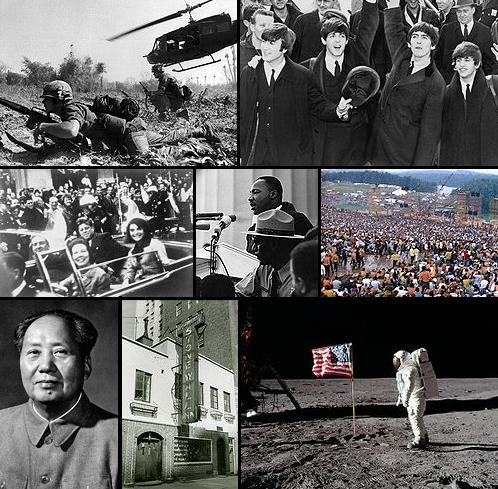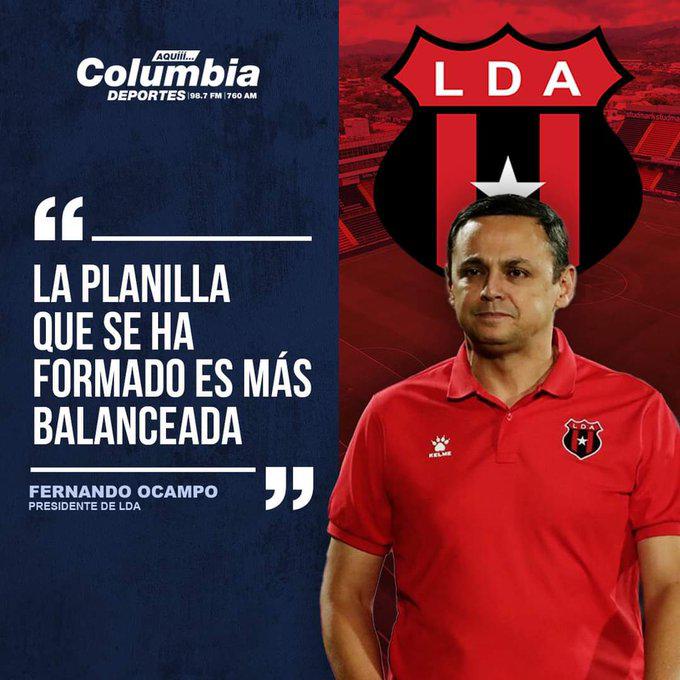Decade 60's
In the sixties, there was an important advance in industry, society, urban and commercial development, sports and culture in our beloved Toluca, which had a population of approximately 156 thousand inhabitants, according to census data from that time.
During this important decade, the following were municipal presidents: Aurelio Zúñiga Nájera from 1961 to 1963; Don Jaime Pons Hernández from 1963 to 1965 and for the second time Don Felipe Chávez Becerril from 1967 to 1969.
As governors of our State, they were in charge of the executive: Dr. Gustavo Baz Prada from 1957 to 1963, the highly esteemed Juan Fernández Albarrán from 1963 to 1969, and Professor Carlos Hank González from 1969 to 1975.
As rectors of our highest house of studies UAEMéx (formerly UAEM), were the esteemed doctor Mario Cesar Olivera Gómez Tagle and doctor Jorge Hernández García.
We will mention that in this decade the “American Way of Live” arrived in our beloved Toluca with automobiles, milkshakes, tube pants (today again in fashion among adolescents) and the rock&roll rhythm. The famous soda fountain "El Luna Park" located on the corner of Quintana Roo and western Hidalgo avenue where today the building that houses the central offices of the ISSEMyM stands majestically, built by Dr. Mario C. Olivera when he served as General Director of the same organism; This soda fountain was the meeting place (personally I lived it in the 70`s) of all the young people from well-known families from Toluca where they arrived with their latest model cars (Mustang, Galaxie 500, Barracuda, Impala and the famous Vocho, among others), dressed in the latest fashion. From Saturday afternoon and on every Sunday after attending the mass (1:00 pm) of the famous temple of the three ships "El Ranchito" and in the afternoons of the same day, it was to go around the famous "Alameda" and taste some delicious milkshakes, soft drinks or a good ice cream from the famous shorty whose wooden cart bore the suggestive title of "Goodbye your presumed" located on the sidewalk in front of where the well-known Tolucan Estévez Saénz families lived of Sicily and Faure Vilchis on Quinta Roo.
Right there, “arrancones” (couple car races) were organized from Luna Park to Guelatao, where the monument to the child heroes was located (former stone bed), since at that time as at present the Hidalgo de la Alameda avenue towards the former stone bed, vehicular circulation was two-way, these events were the icons of youthful tastes that marked the beginning of this great decade of Tolucan in the capital of our State.
The most renowned youngsters of this decade were: Los Acra, Velasco, Salgado, Vilchis, Díaz, Sánchez, Barrera, Gómez, Chávez, Bernal and González among others who, among many of them, talked about their adventures at their school that in that then the UMLA, Latin American Military University located by the famous Desierto de Los Leones was in fashion, where the wealthy parents of that time sent their children for their high school education.
For them it was very common for them to visit Toluca on weekends with their companions from other parts of the country and many of them “broke hearts” or broke “bones” for wanting to woo an engaged girl. At that time, lawsuits in the purest style of "Love without Barriers" involving different bands that quarreled with others were common.
The Charro Center (where, unfortunately, Alfredo Zarate Albarrán was fatally wounded while he was Governor of the State), where the State Attorney General's Office (formerly the Attorney General's Office) is located today, lived its best times as the social center of Toluca in which Meetings such as 15-year parties, weddings, birthdays and other celebrations of Toluca's high society were held.
In relation to the above, at that time the Association of Charros of the city of Toluca was presided over by one of its founders, Mr. Silvestre Díaz López, who gallantly and proudly wore his charro suit and carried our national flag during the parades and famous festivities of this important and well-known association.
Other charros of the time were the Pliego, Herrara, Chávez, Cruz, Mondragón, Rodríguez and of course the famous charro the esteemed Don Octavio Chávez Gómez (son of the much loved Don Felipe Chávez Becerril) who founded and headed the charro school I had among other students the Labastida (my former neighbors), Barbabosa, Navarro, Gómez de Orozco, Xavier Lazcano Díaz and many children from those years.
It was a novelty that someone went on a trip, especially to Europe, and that was published by the print media such as in the newspaper El Noticiero in the famous column SE MURMURA by Mr. Arturo Salazar under the pseudonym Carlos Balboa.
Regarding the cinemas in this decade, both “El Rex” (remembrance in this decade where my cousins Hernández Solalinde, Ortiz Solalinde and sometimes our lifelong friends the Molina Carbajals used to see three movies for $5.00 pesos in the Sunday matinee at this cinema) since the house of my uncles Solalinde Ozuna was adjacent to the Rex cinema and where the Plata printing press was housed on the ground floor of the building for some time and later for many years the “La Royalti” gifts from the Gómez family; the Coliseo (formerly the Municipal Theater), the Florida and the Justo Sierra today the brand new Felipe Villanueva room built in the three-year term of mayor Agustín Gasca Pliego; They continued to present not only films for Toluca society, but also other types of events such as government reports, plays, etc.
Regarding business openings, Mr. Eulalio Torres Muro inaugurated "Casa Torres" on Juárez avenue to distribute Phillips electrical items. He came to have several furniture stores and appliance repair shops. In the furniture store that he had on the corner of Matamoros and Avenida Hidalgo on the ground floor of the Hotel Rex (owned at that time by the famous and esteemed doctor Jesús Chávez Becerril) where the pharmacy "El Fénix" (nowadays a shoe store); The “Jules Rimet” cup that was played in the 1970 World Cup where Toluca was sub-host was exposed.
The Contreras sisters inaugurated the “Plásticos Distributor” in the 16 de septiembre alley, where you could find a wide assortment of lamps, kitchen containers, toys, pieces for the bathroom, and all kinds of plastic material that it was the novelty.
The brothers Jesús and Margarita Roldan opened the "Universidad" pharmacy, located in Juárez next to the rectory of the highest university (UAEMéx) where at that time the schools of dentistry and architecture were also located and They gave private English classes. The Roldans had another pharmacy called “Terminal”, in the building that was where today is the Gran Plaza Toluca. The "Cruise Shoe Store" was also inaugurated where nobody, but nobody, gives you cheaper, from the Velasco family. Don Javier Miranda inaugurated his "Yolmir Gifts" business in the passage on September 16, built and decorated by Fernando González Arriata, with Father José Pérez in charge of blessing him and sponsored by Ernesto Monroy Jr., this business had the slogan "the home of the zodiacs". ”and revolutionized Toluca in gift systems, when dealing with European exclusivities such as glassware, porcelain or paintings.
The Vázquez brothers inaugurated their women's clothing business "Modas Ella" on Avenida Hidalgo, it was an exclusive establishment of elegant and good quality clothing for Tolucan women, Bishop Arturo Vélez Martínez was in charge of blessing said business , where later at the Hotel San Carlos (owned by the highly esteemed Mr. Jaime Pons Hernández) a fashion show was held with exclusive designs by "Patty Ann de México". The “Sombreros Cuauhtémoc” business was also inaugurated, where distinguished people from Toluquía could be found such as Don German Roth and Don Silvestre Díaz.
In this decade the famous restaurant "El Centro Gaucho" was also inaugurated, located on Bravo street, the owner being Don Panchito Berterame, who was a famous media outlet from Toluca, a pioneer in restaurants of this type (Argentine cuts) in Toluca.

The students of the famous and prestigious Secondary School number one who in this decade was headed by Professor Fernando Aguilar (El Torito) as well as enjoying the already famous Tortas de la Vaquita (of Mr. Moreno) and living in the "La Elite" ice cream shop, saw the birth of other places of the time such as the "La Queni" soda fountain of the Quesnel family located in the famous Portales de Toluca, and where the first hamburgers and hot dogs in the city were sold.
Likewise, the cake businesses proliferated in the famous cupboards along the Portales, of which to date were bombas, topa, salpicón, chile macho, tompiate, mole milanesa, etc.
Those who do not set foot at night to dine at the popular “Hostería la Posada de los Muciño” today we would call it the “Mercendero de Allende”; the traditional tacos of Toluca starting with those of Rosita "Taquería El Sol" with its famous flautas of meat, reinforced, green mole and the spicy tortas de bombas, those of Brigidita, those of chiquitas, whose owner lips well outlined by the " bile”, were located in a hallway to one side of the Government Palace, those of Luchita located in Independencia between Rayón and Sor Juana, later attended by his son Juanito.
On the other hand, among the famous events of the beginning of the decade, the “Gutiérrez Dosal” Field was inaugurated for Club Deportivo Toluca, in honor of its previous president Don Luis Gutiérrez Dosal, who died the previous year.
Don Camilo Dumit, organized a tribute to the well-known professor Filiberto Navas (Professor Animo), director of Physical Education of the State Government, who was decorated by the Toluca City Council and to whom a special radio program was dedicated on XECH. As part of the tribute, some marathon runners covered a large part of the city with a goal at the "Charro Center" where they honored the professor together with the Mexican Tabacalera and Juventudes Revolucionarias of the PRI Political Institute.
Among other events, Mrs. Baz, wife of Governor Dr. Gustavo Baz Prada, inaugurated a Children's Club for children's recreation in the "Quinta del Carmen" where they were taught carpentry, manual work, hiking and other activities. The French Alliance of Toluca organized exhibitions, especially paintings by French-speaking artists; thus planting the seed of what to this day is a kind of brotherhood between the Toluqueños and the French.
In connection with the above, the first concert of the Fine Arts Orchestra was held in the auditorium of the Justo Sierra school (now the brand new Felipe Villanueva concert hall), with the presence of director Jorge Delezè, with music by Bach, Debussy, Pablo Moncayo and Mendelssohn.
The first anniversary of the Youth Club "Peritas y Cremas" was also celebrated, which met at the Independencia address with number 505, having as main organizers Martha Espejel Ugalde, Octavio Barragán and Carlos Garduño Jr., among others.
Mrs. Gloria Zayas Vda. De Gutiérrez Dosal, she celebrated her birthday for her aunt, Doña María Pérez de Pons (la Chata Pons) at the Doña Rosa Hacienda of the Negrete family. The decoration was wonderful, since they placed large Mexican pots with bouquets of flowers, multicolored palm hats, among other ornaments; Mariachi Vargas de Tecalitlán, was in charge of entertaining the meeting where a large part of Tolucan society gathered to celebrate such a distinguished lady
Alfonso and Ángel Ruiz, opened their photographic studio “Ruiz” in the Portal Madero; where at this time the famous photographic family business "Foto Robles" also emerged, which today maintains the famous "Toño Robles" in Tolucan social life.
Olga, Filiberto, Cándido and Miguel Ángel Cedeño (brothers) inaugurated at 402 Ote Guerrero street. the modern grocery store “El Águila”; There are other stores in the same field such as "Casa Avilés" located in Lerdo and Callejón del Carmen and Don Fernando López groceries located in Pasaje 16 de Septiembre and Independencia.
“Camisería Cadillac” by the Vázquez brothers was inaugurated, which was characterized by its functionality and elegance, located on the corner of the Madero and 20 de Noviembre portals.
An important event in commerce was the grand inauguration of the "SEARS" department store at number 104 Constitución street (Velasco family property), which was attended by the licensed governor Juan Fernández Albarrán, Sergio Barroso, manager of the Toluca warehouse and W. Plummer, president of the Mexican SEARS Corporation.
The “Salinas y Rocha” store was also opened at number 114 Constitución street, where the old Toluca-Mexico bus terminal was located.
On the other hand, various businesses continued to renew themselves, such was the case of “Tejidos Nacionales” by Don Gabriel Tapia González, “Perfumería Corona” by Don Gabriel Corona.
In the “El Nuevo Mundo” store you could find all kinds of clothing and furniture, it was located at Portal Madero 36. In the same way, “Myrsa” furniture and gifts were a good option to buy, in addition to furniture, household appliances, radios, televisions and watches, and was located in the Santa Elena building located in Belisario Domínguez today Plaza Fray Andrés de Castro.
Shoe stores were inaugurated; “Zapatería Roma” and “Zapatería Atlas”, the latter property of Mr. Ángel Olivares, “Zapatería Joyce” of the Mondragón brothers located in eastern Hidalgo in front of the Mona Lisa shoe store, owned by Mondragón themselves.
Joaquín Fernández inaugurated his business "Muebles Fernández" located at Galeana number 10, having gained experience as CIMMSA Manager, furniture store.
Famous haberdasheries of the decade were “Mercería Guerra”, “El Venado”, “La Gacela”, “Mercería Hidalgo” and recognized stationers were “ABC” by Don Hugo Ávila, “Pliego” by Don Alberto Pliego, El Triumph”, “La Carpeta” by José Luis Arochi Téllez, the “Iris” by Mr. Arturo López, the “México” by Mr. Francisco de la Mora and the Pimy by Mr. Cerecero.
In this decade the "Cristal" bookstore was also inaugurated, unfortunately now defunct and which for many years was an important supplier of textbooks and all kinds; It was located at the corner of Independencia and Sor Juana Inés de la Cruz on the opposite corner of the reference Miranda dry cleaners.
The Claret school, where the young ladies Pliego were in charge of said institution, stood out as a private school where "the children of good families" studied and which were later joined by the Cristóbal Colon school located on the corner of Quintana Roo and Lerdo de Tejada (a house with a special architecture and where Don Isidro Fabela lived when he served as Governor, (there a server 1st, 2nd and 3rd grade) that was inaugurated in this decade, like the Pedro de Gante Institute and the " Instituto México" (where I finished my primary education in 4th, 5th and 6th grades with Enrique Abascal Tapia, Héctor Tapia Faure, Santos López García, Filiberto Hernández Villar, Jaime Pulido López, Ernesto Zarandona, Guillermo Capetillo, Alfonso Faure Vilchis, Roberto Lara García, Alberto Barbabosa Salgado, José Luis and Arturo Robles among others; and as they would say at this time and with great respect towards my ex-colleagues, pure FIFI.) At the State Higher School of Commerce it was very common to study the career of private accountant, there was also the Instituto Cultural Femenino located in Matamoros, where studies were offered as an Executive Bilingual Secretary, interior decoration, and evening classes in English and dance.
How to make a movie trailer-use iconic music that won't appear in the movie -have the action be in sync with said… https://t.co/0MKHKMfav1
— shloop Sat Jun 12 03:05:09 +0000 2021
The Toluca Single Motor Transport Terminal was inaugurated with Mr. Rubén Nava as general manager.
To live, the Lomas Altas, Pilares and Casa Blanca subdivisions were new, detonating at the end of this decade the Colonia Ciprés, today Polanco Toluqueño, where renowned families settled such as: Ballina Neidarth, Moreno Ortiz, Pulido López, Ballesteros Sentíes, Salgado Negrete, Chávez Becerril, Chávez Echeverri, Chávez Negrete, Ortega Chávez, Nemer Álvarez, Camacho Miranda, Pérez Leyva, Pliego Mondragón, Meza Sánchez, Vilchis Echeverri, Gómez de Orosco, Cano García, López Alvear, Pons Pérez, Estrada Alanís, López Escobedo , Pino Pliego, Salgado Yurrieta among other deeply rooted Tolucan families.
The acceleration award of the Toluca Automobile Club (CADET) was also held, which was directed by the good friend and highly esteemed Pepe Acra Carmona and on this occasion it was held in Circunvalación Sur, on Sunday September 27, 1961 at 10:00 AM, the esteemed Mariano Salgado Montesinos being the winner in his Chevrolet car.
Like charrería, American football; Motorsports has taken root in Toluca since the middle of the last century, thanks to the impulse that since then and up to the present day has been given by dear Pepe Acra, who along with Sixto Franco, the brothers Mariano and Roberto Salgado Montesinos, Melitón Díaz, Sergio Velazco , Francisco "el chango" Negrete, Jorge Montes de Oca, Luis Orduña, Pedro García, Pedro Acra, Pedro Castañeda, the Vorraths, the Hurtados and other distinguished Toluqueños participated in various races such as the Colón circuit, the quarter mile races in Beltway today Paseo Vicente Guerrero, and various rallies in Valle de Bravo, Ixtapan de la Sal and other towns in our State of Mexico.
Several editions of the "Circuito Colón" race were held to help students in the works of the University City, our glorious and renowned UAMEX. Pilots from Toluca and D.F. participated in this race. today CDMX, Puebla, Morelos, highlighting the presence of Moisés and José Antonio Solana, Julio Azcárraga and Marcelo Quintanilla along with other local pilots.
In this decade, go-kart racing began, with practices in the quadrangle of the Military Zone, today the emblematic "Parque Metropolitano Bicentenario".
The enthusiasm of the Toluqueño pilots led them to compete in other cities such as Puebla, Cuernavaca, Pachuca, León and Aguascalientes, as well as the famous Avándaro Circuit in Valle de Bravo.
The following distinguished themselves by their participation, courage and quality, in addition to those already mentioned: José and Pedro Acra Carmona, Mariano, Juan and Roberto Salgado Montesinos, Vicente Márquez, Rafael "chivo" Pérez, Toño San Juan, Eduardo "güero" Baca , Osvaldo and Pedro Armando Gómez Núñez, Camilo Orozco, Manuel Ibáñez, Guillermo Villa Calleja, Eduardo Zenil, Jorge Ceballos, Pedro de la Vega, Eduardo "el charal" Díaz Leal, Sergio Olguín del Mazo, Ricardo Barraza, Andrés Cadena, Víctor Manuel Bernal, Gustavo "pájaro" Estrada, Jorge the "bear" Vilchis and later Francisco "el chango" Negrete Cravioto, among others, who competed with the pilots who at that time were distinguished nationally and internationally as the "bache" Mariscal, José Antonio and Moisés Solana and the brothers Pedro and Ricardo Rodríguez.
The Rotary, Lions and Knights of Columbus social service clubs distinguished themselves by their splendid and elegant parties which were enlivened by the Vega Brothers, the youth group "Los Intocables" and the "Carlos Tirado" orchestra; It is worth mentioning my dear friend Rosita Molina del Castillo, daughter of the highly esteemed in the social circles of Toluqueña society Don Felipe Molina Reyes and Rosita del Castillo, who was crowned the first Queen of the Toluca Lions Club, having as princesses the well-known Toluqueños Tere Alva and Lupita Arochi and as chamberlain the esteemed and well remembered by all Toluqueños Mariano Salgado Montesinos.
This event was held in the car showroom of the Chevrolet agency located on Avenida Hidalgo Ote., which was in charge under the management of Mr. Enrique Torres Torija.
The Díaz Macedo brothers, sons of Don Silvestre Díaz, owner of the famous "Rancho Tlacopa", which was located near the famous "maquinita", organized Mexican nights, in which there was an orchestra, mariachi bands, Mexican snacks and a variety of . The Díaz Macedo family was characterized by being splendid, enthusiastic and excellent hosts and highly esteemed in Toluqueña society. Othón "Toto" was called the "handsome" and he was the eldest of the dynasty, standing out for being a very good friend and very gallant.
In 1963 there were several events. The watch production plant "Industria Relojera Mexicana" was inaugurated in the industrial zone. In addition, there were already other important plants installed such as Pfizer, Nestlé and Química Sol.
In June of that year, the first ball for journalists was held in the Granero Hall of the Motel del Rey, enlivened by the Luis Alcaraz orchestra.
On the other hand, the Círculo Social Toluqueño organized annually the "Baile del Percal", in which a contest of original designs made in calico was carried out where more than 70 ladies of the society were part of this contest, in where there was also a coronation of the queen.
Festivities and dances such as the famous "Rebozo" were already organized in the "Salón Imperial" of the Motel del Rey owned by Don Arnulfo Martínez Colín, originally from Atlacomulco, where the ladies of Toluqueña society attended wearing ball shawls, including Doña Consuelo Rodríguez de Fernández Albarrán, wife of Governor Juan Fernández Albarrán. Among the attendees were also the Sánchez, the Almazán, the Mena, the Barrera, the Pliego, the Barbabosa, the Salgado, the Díaz Macedo, the Sánchez Henkel, the Molina, the Rodríguez, the Velasco, the Echeverri and the Yurrieta, among others. many. This event was intended to raise funds to benefit children's orphanages.
This hall also organized a dance, dinner and fashion show to benefit the IPI, Institution for the Protection of Children, which was enlivened by the orchestras of the Juárez and Vega brothers.
The ladies of the Toluqueña society, as well as the IPIEM collaborators, organized monthly "canasta teas" for the benefit of their protected children, in which they played canasta, savored sandwiches and had pleasant talks, several of these meetings were held at the house of Mrs. Consuelo Rodríguez de Fernández Albarrán (wife of licensed governor Juan Fernández Albarrán), I quote in Carmen Serdán Colonia Residencial Colon today owned by the Gómez de Orozco González family.
When Christmas arrived, it was possible to enjoy the posadas organized by Don Carlos Mendoza, owner of the "Refaccionaria Mendoza" in the Motel del Rey who later became a strong businessman who owned gas stations and car agencies; and those of the famous "Rancho Tlacopa", and which were organized by Aída, Meño and July Díaz. These posadas kept the tradition of asking for posada with candles, breaking piñatas and savoring the cuisine of this season.
In 1965, Don Raúl Naveda inaugurated the "Picolino" cafeteria, in front of the Rex cinema and the "Brunswick Social Center", which had billiards tables for the entertainment of Toluqueños.
Don Alfonso Gómez de Orozco and a group of businessmen, industrialists and civil society made possible the dream of having a recreation area for the practice of sports and that is how the first stone of the famous and already a reference in Toluca "Club Toluca", I quote at the intersection of Pino Suárez and Circunvalación (today Paseo Tollocan) today commanded by its president of the Council the very esteemed friend Enrique Gómez de Orozco González.
The "Tivoli" baths were inaugurated, owned by the Contreras family, natives of Almoloya de Juárez. These baths located near the boulevard in Plutarco González had modern facilities such as an Olympic-sized indoor pool, Turkish steam, sauna and Russian, gym, perfumery, showers and soda fountain.
The Mexican Tabacalera contest used to be held in which fourth, fifth and sixth grade students with an average of more than 9.0 points could register, students from Miguel Alemán such as Chuayffet, Curi, Xavier Lazcano among others were winners of this contest.
In this decade, the first stone of the French Alliance was also laid, located on Riva Palacio street (formerly Callejón del Carmen), next to the Morelos Theater.
The “Instituto Falco” was also inaugurated, the first dance school in Toluca, in the penthouse of the Salgado building (owned by Mr. Chon Salgado), Melina Falco served as director of the aforementioned campus, where dance classes were offered Spanish flamenco, plastic gymnastics and classical ballet.
On the other hand, shops arose in relation to the sale of food, such as the Mini Super, owned by Don Ernesto Nemer in the Ciprés neighborhood (Quintana Roo on the corner with Horacio Zúñiga), the store La Proveedora de los Medina by the direction of La Merced and the Lonja Mercantil of Don Pedro García on Allende street in the center of Toluca.
The highly esteemed Pepe Acra Carmona inaugurated “Decoracra”, where tapestries and decoration materials in general were sold, Don José Acra Sabet, father of Don Pepe, Don Carlos Scougall, director of Banco Agrícola y Ganadero de Toluca and Don Heriberto Vidales, the vice president of Goodrich Euskadi, was in charge of sponsoring this establishment located at number 316 Hidalgo Poniente avenue.
The La Campana store owned by the brothers Alberto and José Yamin opened its doors, offering an impressive assortment of clothing for women, men and children. This store was located on the corner of Rayón street and Independencia avenue and was considered the first discount store in Toluca with everything and for everyone.
Don Nemesio Diez and Professor Carlos Hank González, made large donations ($40,000.00 pesos), at that time, to Club Toluca for the construction of its pool, with the purpose of developing competitive swimming in Toluca, Don Alfonso Gómez de Orosco was in charge of carrying out the works.
The first performance of the estudiantina from Toluca took place, which had 56 members under the direction of Francisco Medrano, who had the opportunity to open the end-of-course ceremony of the UAEMéx (formerly UAEM), interpreting “ Estudiantina”, “Alborada”, “Varita de Nardo”, Cielito Lindo” and “Mexico in a lagoon”.
Also for another entertainment of the society of Toluca, the inauguration of the "Bol Toluca" was held to play bowling, in which were present, the governor Juan Fernández Albarrán, Mr. Ramón Cáceres, chief of staff of General Motors, Mr. Carlos Scougall, director of the Agricultural and Livestock Bank of Toluca and José María Basagoiti, of the Tabacalera.
Already by the year 1968, it was a year in which the newspapers were full of news related to the Olympic Games, since Mexico would host this year (October 12); In the same way, the student movements impacted the Mexican population, including the massacre of Tlatelolco on October 2.
As important events and celebrations in the city of Toluca, a banquet of friendship and tribute to Club Deportivo Toluca was organized, especially its league champions, with the presence of Governor Juan Fernández Albarrán and Mr. Nemesio Diez Riega, The speech was given by its president of the club, the well-known and altruistic businessman Eduardo Monroy Cárdenas, also in the presence of another distinguished Toluqueño, Mr. Alfonso Faure López, vice president of the club; the tribute banquet was enlivened by “Los Picolinos”.
The renowned Banco Agrícola y Ganadero de Toluca, inaugurated after 17 years its new building at number 103 Avenida Independencia oriente, downtown Toluca. (beautiful building, where the well-known ladies from Toluca served as secretaries of the high officials of the bank).
In 1969, the Association of Writers and Artists of the State of Mexico was born, where the writer Rodolfo García served as president. The objective of said association was to achieve recognition for the same group, as well as to fight for the increase of art and defend common interests.
In the month of September of this year, the emblematic and icon of Toluca, the luxurious Morelos Theater, opens with the Piatnisky choir, Russian folk dances, the puppets of Igor Divoy and the ballet dancer Nina Gaekho; This gala function was organized by IMPIEM (today DIFEM) with Mrs. Consuelo Rodríguez de Fernández Albarrán (Chelito) in charge of the presidency and the teacher Cristina Camacho López (Mrs. Cristy) as general director, in this act where all of Toluca gathered , a great farewell tribute was made to Mr. Fernández Albarrán since he was days away from delivering the executive post to the charismatic professor Carlos Hank González, this event was in charge of the band from the State of Mexico, dedicating one of the favorite songs from the first lady (Chelito) “Yours is my heart”. And from there to prepare the traditional Friday taco as a family.
The city of Toluca at the end of the sixties and already under the government of Professor Carlos Hank González, was torn between nostalgia and modernity, with a society that, always latent for its favorite team the “Red Devils” or the "choriceros" or as the respectable fans like best; Since then, the tradition has been made of attending “la bombonera” every 15 days and from there preparing the traditional Friday taco as a family.




